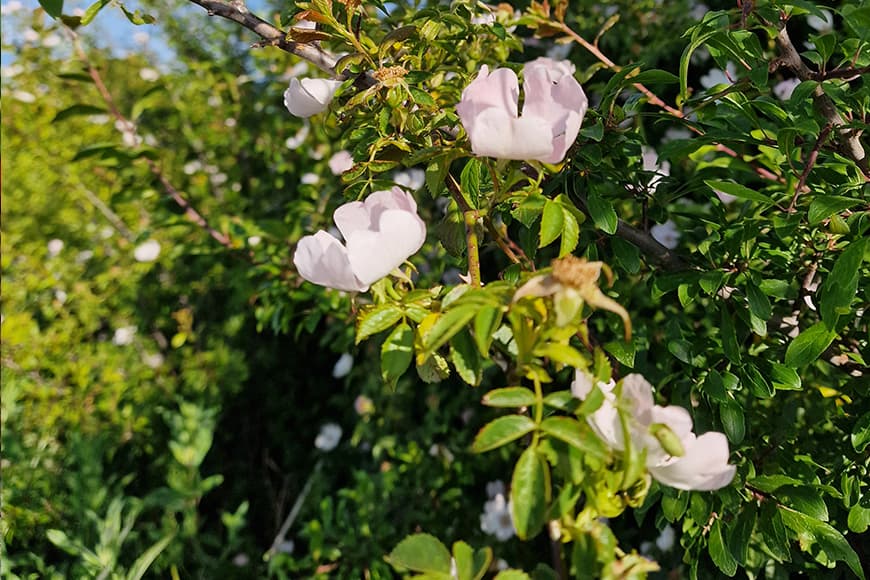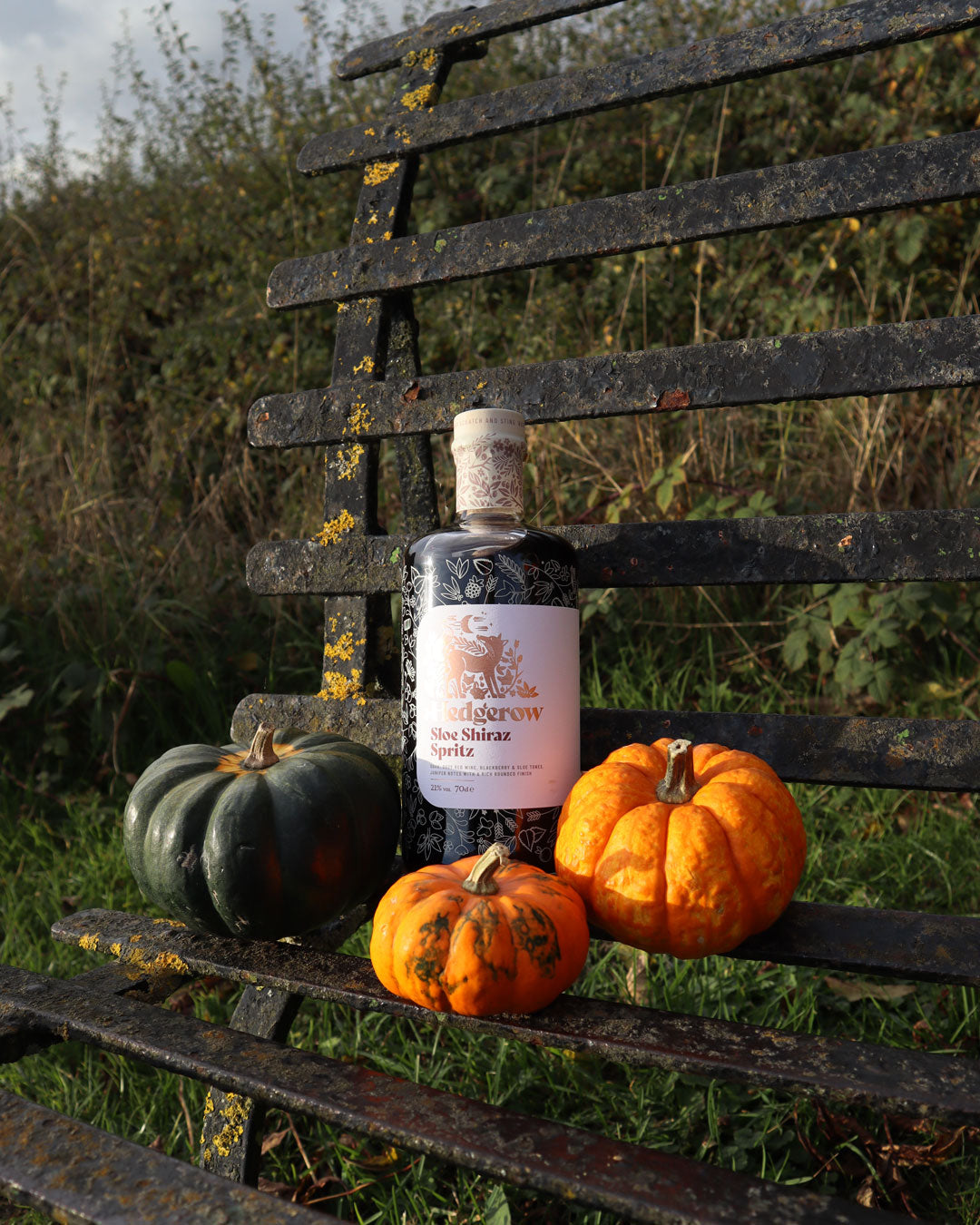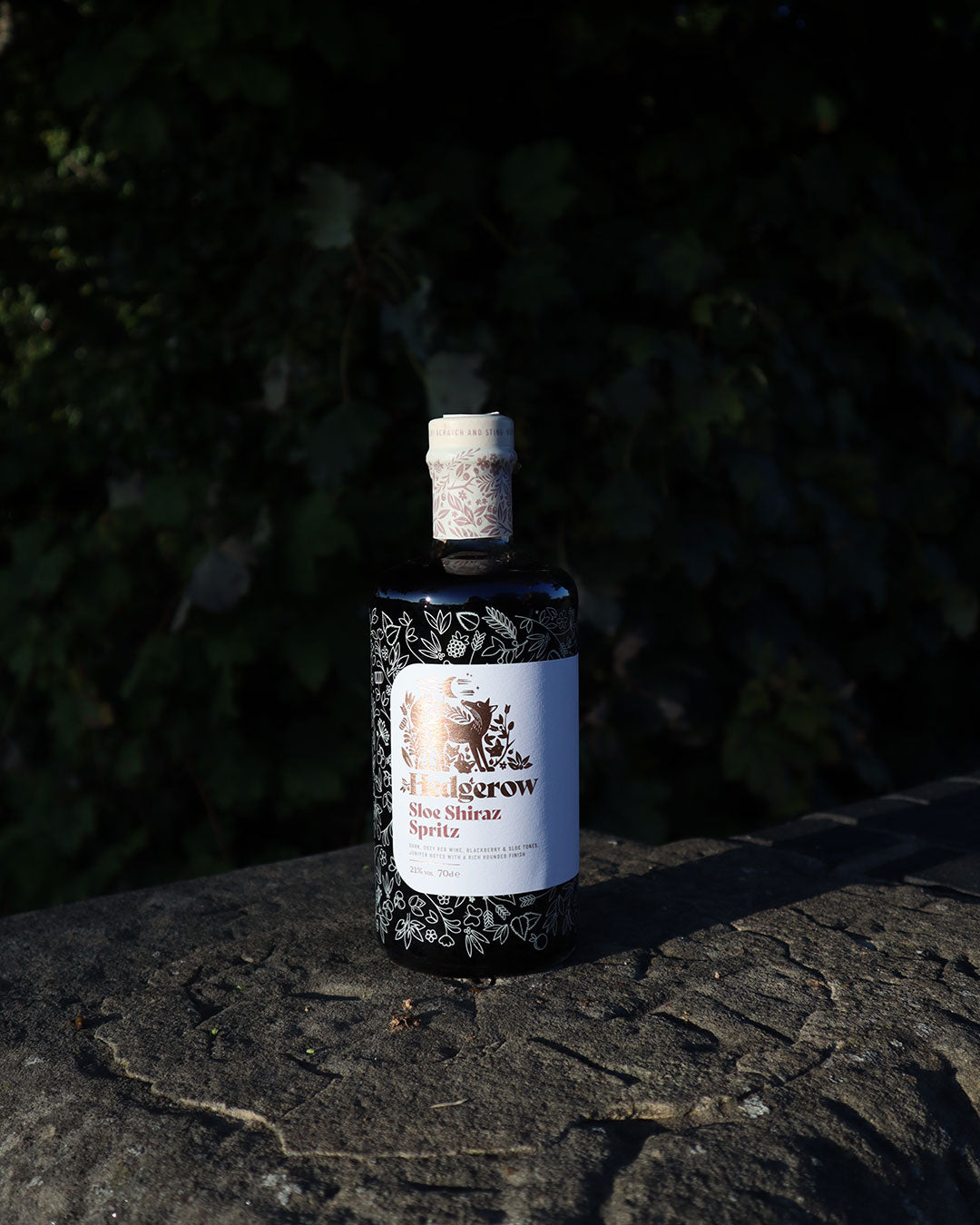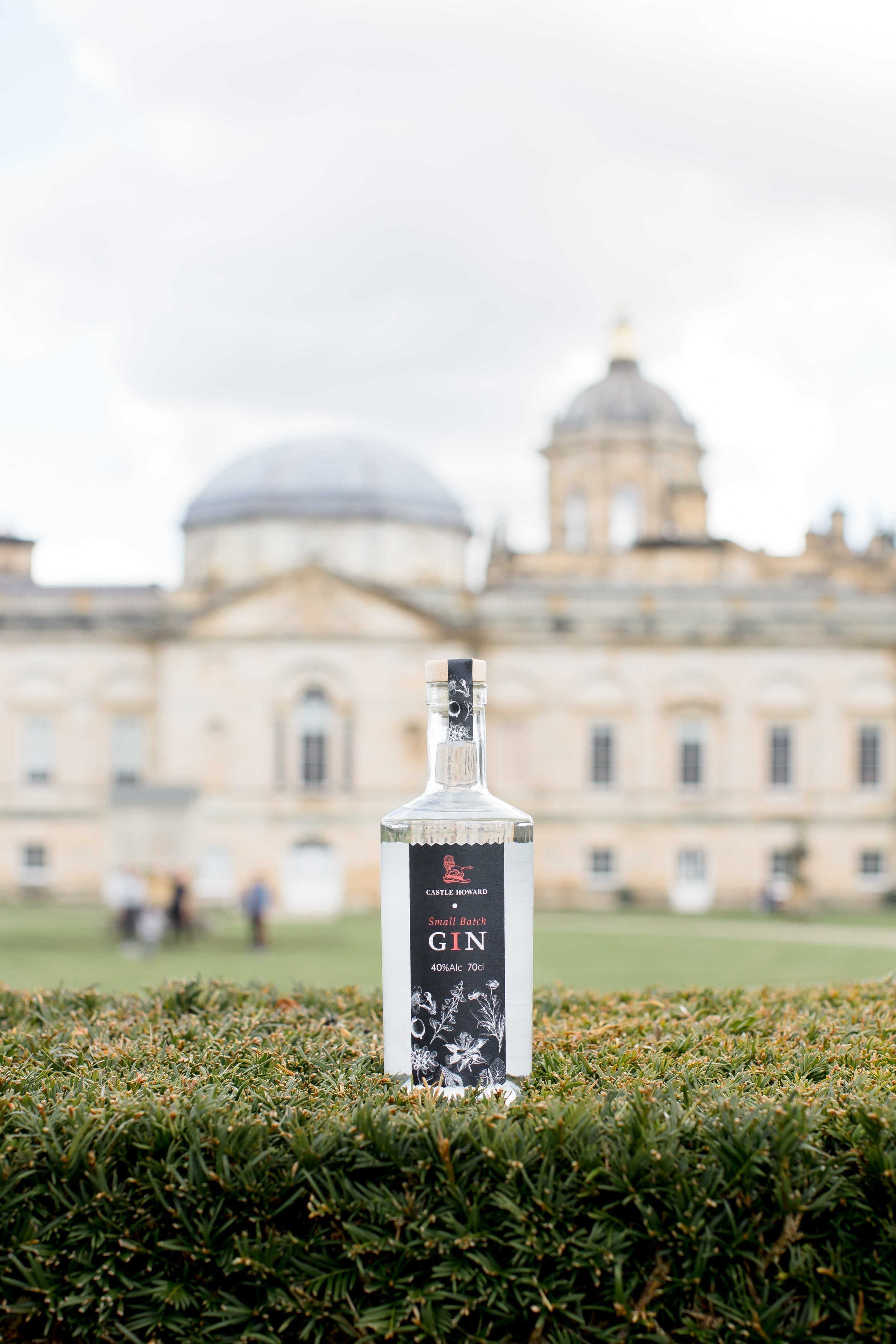
The Dog Rose is a climbing wild rose with beautiful white-pink flowers and a soft subtle scent. You can see the gorgeous petals in hedgerows, scrub and woodland edges right now. Once pollinated, generally by insects, the fruit ripens in September and October. Dog rose flowers are an important nectar source for insects, and its fruits are a food source for birds such as blackbirds, redwings and waxwings.
Its deep orange-red fruit, the rosehip, is the most commonly used part of the plant, although dog rose has many other uses in food and medicine. Rosehips have been used to make jams, jellies, pies and stews. The petals and leaves of dog rose can also been brewed for tea or made into wine. The flowers make a delicious syrup, and can be eaten in salads or candied or preserved in vinegar, honey and brandy. Amazingly, rosehips have 20 times more vitamin C than oranges.
All roses produce hips, but we don't see them as often as flowers because gardeners tend to trim off spent blossoms to encourage a flush of new ones. But if you leave some – or all – of the dying flowers, they'll turn into eye-catching hips in early autumn, often lasting well into winter.
Roses are in the same family as apples, so it's no surprise that their hips are also edible, tasting slightly tart, like crab apples. The right time to harvest hips is just after the first frosts have softened them, while they're still firm and colourful. Just be sure to leave some for the birds 😊
In our Hedgerow Gin, we use the classic juniper, coriander, angelica, orris and bay along with six botanicals foraged from the farm and local hedgerows, including crab apple, rosehip, elderflower, nettle leaf and wildflower meadow hay. The rosehip brings a citrusy element to our delicious, award-winning Hedgerow Gin. Serve over ice with a slice of apple, sit back and relax and enjoy a truly gorgeous G&T.
Its deep orange-red fruit, the rosehip, is the most commonly used part of the plant, although dog rose has many other uses in food and medicine. Rosehips have been used to make jams, jellies, pies and stews. The petals and leaves of dog rose can also been brewed for tea or made into wine. The flowers make a delicious syrup, and can be eaten in salads or candied or preserved in vinegar, honey and brandy. Amazingly, rosehips have 20 times more vitamin C than oranges.
All roses produce hips, but we don't see them as often as flowers because gardeners tend to trim off spent blossoms to encourage a flush of new ones. But if you leave some – or all – of the dying flowers, they'll turn into eye-catching hips in early autumn, often lasting well into winter.
Roses are in the same family as apples, so it's no surprise that their hips are also edible, tasting slightly tart, like crab apples. The right time to harvest hips is just after the first frosts have softened them, while they're still firm and colourful. Just be sure to leave some for the birds 😊
In our Hedgerow Gin, we use the classic juniper, coriander, angelica, orris and bay along with six botanicals foraged from the farm and local hedgerows, including crab apple, rosehip, elderflower, nettle leaf and wildflower meadow hay. The rosehip brings a citrusy element to our delicious, award-winning Hedgerow Gin. Serve over ice with a slice of apple, sit back and relax and enjoy a truly gorgeous G&T.





